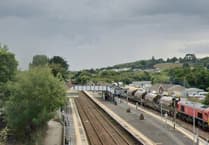CAMPAIGNERS for a safer A38 have hailed the arrival of long-promised safety upgrades on the road, including a long-awaited puffin crossing for Tideford — but warn that without dualling the notorious Carkeel–Trerulefoot stretch, the road will ultimately remain “unfit for purpose” and dangerously overcapacity.
James Millidge, chairman of the Safe38 campaign group, said the past year and a half had finally brought movement after years of pressure. Drainage improvements at Notter Bridge have stopped the regular flood closures that once brought chaos, while new average-speed cameras and reduced limits through both Landrake and Tideford mark what he calls “long-overdue recognition” of the dangers residents face daily.
“It’s taken nine years to deliver measures that should have been in years ago,” he said.
The new safety features will inevitably save lives and cut catastrophic closures but at the cost of slower, more congested traffic, he adds. With hundreds of new homes being built on the Treledan estate at Carkeel, plus a major new roundabout being constructed at Stoketon Cross, Mr Millidge predicts delays will soon reach “intolerable” levels.
That, he argues, is precisely why dualling the road, part of the strategic road network in the South West, can no longer be ducked. Safe38 points to strong economic evidence delivered to the government back in 2018 supporting a full upgrade which would unlock growth, protect vital links to Plymouth’s defence and industrial hubs, and finally give South East Cornwall a road that matches its needs.
A new dual-carriageway would also free the existing A38 to become a proper local road, reconnecting communities long severed by heavy traffic and suffering from dire air pollution levels.
Mr Millidge also pointed to a forgotten chapter in the A38’s history – a major dualling scheme that was all but ready to go three decades ago. A viable northern route was drawn up in the early 1990s, with compulsory purchases completed and public consultations signed off. “Everything was in place, then the funding was pulled at the last minute,” he said.
The scheme, costed at £44-million in 1994, would likely have transformed travel across South East Cornwall by now, he adds.
Mr Millidge acknowledged the geographical and environmental challenges such a route presents, but insisted the balance of evidence still overwhelmingly favours building it.
“We don’t take environmental impacts lightly,” he said. “But for the majority of people, the economic and safety benefits of a new dual carriageway are clear. It’s the solution that should already have been delivered.”





Comments
This article has no comments yet. Be the first to leave a comment.